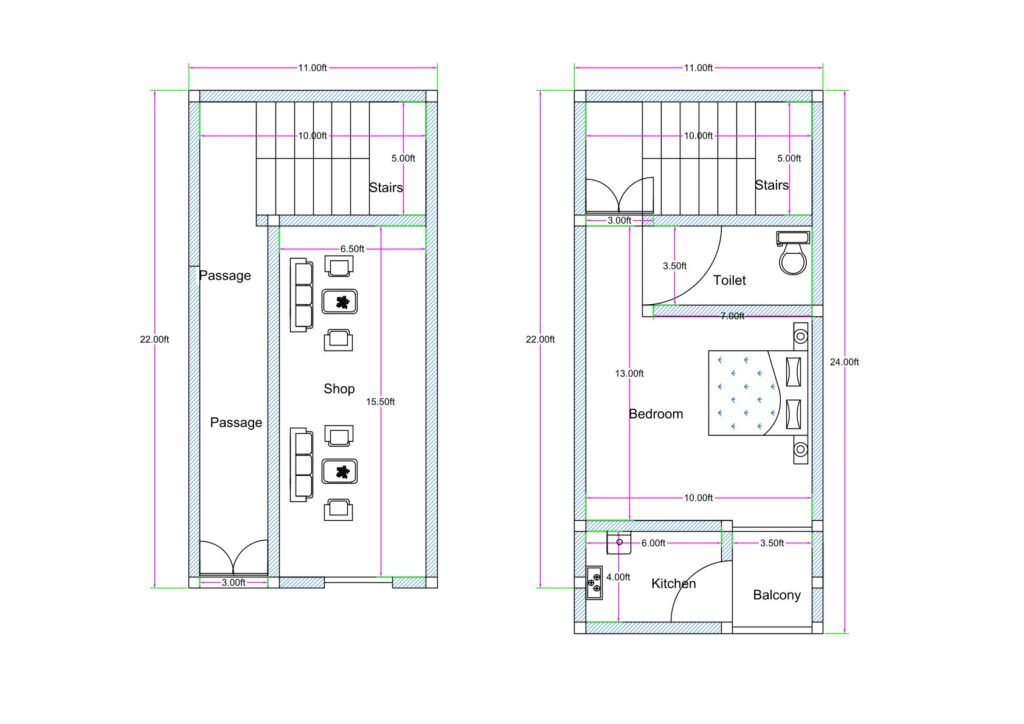Description: Learn how to understand architectural floor plans, symbols, dimensions, and layout basics. Essential for homeowners, designers, and students.
🏠 How to Read a Floor Plan: The Ultimate Beginner’s Guide
Author: Vinit Kumar, Founder of Buildingo.in
Published on: [24/07/2025]
Whether you’re planning your dream home or downloading a ready-made design from Buildingo.in, understanding a floor plan is essential. Floor plans provide a bird’s-eye view of your space and guide architects, builders, and homeowners during construction.
In this guide, we’ll explain everything you need to know as a beginner.
🧭 1. What is a Floor Plan?
A floor plan is a 2D drawing that shows the layout of rooms and spaces in a building from above. It outlines:
- Room sizes and shapes
- Wall thickness
- Door and window placements
- Furniture layout (optional)
- Stairs, fixtures, and fittings
🏗️ 2. Why Floor Plans Matter
Floor plans help you:
- Visualize how people move through a space
- Estimate construction costs
- Communicate with contractors and engineers
- Save time and money with efficient design decisions
📐 3. Key Elements in a Floor Plan
Here are the most important components to recognize:
a. Walls
- Shown as thick solid lines
- Sometimes double lines (for external/internal walls)
b. Doors & Windows
- Doors = quarter circles or arcs
- Windows = breaks in wall lines, often labeled
c. Dimensions
- Numbers along walls showing lengths (in feet/meters)
d. Stairs
- Series of parallel lines
- Arrow indicates direction (up or down)
e. Symbols
- Toilet = “WC”
- Sink = small rectangle or circle
- Electric symbols (light bulb, switches, etc.)
f. Labels
- Every room is named: Bedroom, Kitchen, Drawing Room
📊 4. Understanding Scale
Most plans use a scale like 1:100 or 1:50. This means 1 cm on the plan equals 100 cm in real life. Check the legend for details.
🧱 5. Reading Buildingo.in Plans
On Buildingo.in, each drawing:
- Includes clear labels & dimensions
- Is categorized by number of floors, BHK, and purpose
- Is downloadable in PDF or DWG format
Pro Tip: Always cross-check a plan’s Total Area, Carpet Area, and Built-Up Area when comparing options.
🧭 6. Common Floor Plan Mistakes to Avoid
- Ignoring circulation space (corridors, stairways)
- Not checking sunlight orientation
- Not factoring future expansion needs
- Misreading scale or room proportions
🏁 Final Thoughts
Now you have a solid understanding of how to read and interpret a floor plan. Whether you’re a student, builder, or homebuyer, this skill will help you make smart design decisions.
👉 Explore hundreds of ready-to-use plans for free at Buildingo.in and get inspired!

